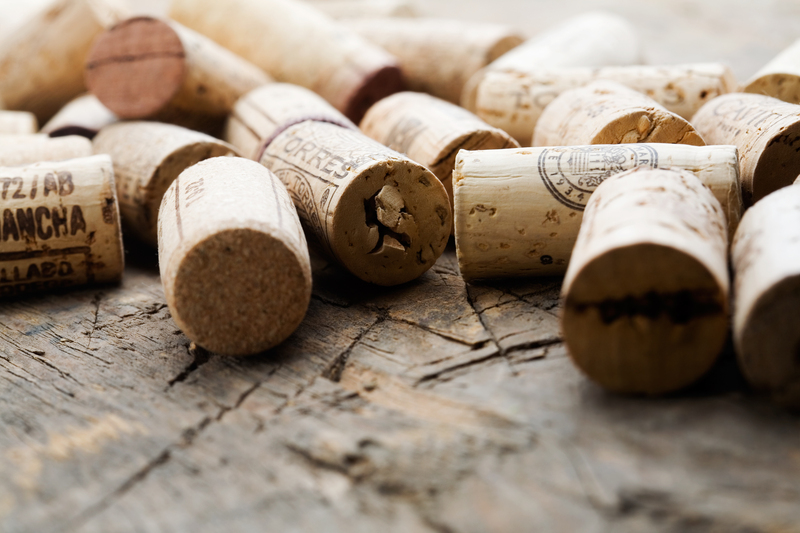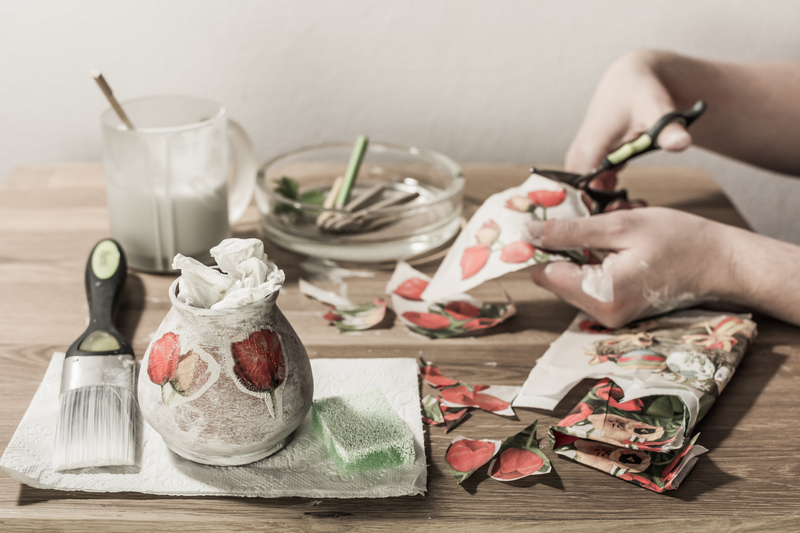Innovative Approaches to Cardboard Waste and Sustainable Packaging
As the world embraces sustainability, the packaging industry is experiencing a paradigm shift. Today's consumers and businesses are increasingly mindful of their environmental footprints, prompting a search for innovative solutions to cardboard waste and the evolution of sustainable packaging materials. Uncover the latest trends, technologies, and eco-friendly practices revolutionizing the way we package, ship, and recycle cardboard products.
Understanding the Cardboard Waste Challenge
Cardboard, also known as corrugated fiberboard, is a staple of the modern packaging sector. Its lightweight, strength, and versatility make it a primary choice for shipping and product packaging. However, these advantages come with an environmental price. The surge in e-commerce, convenience packaging, and global shipments has drastically increased cardboard packaging waste.
- The EPA estimates that the U.S. generated over 41 million tons of paper and cardboard waste in 2018 alone.
- The recycling rate for cardboard is high--over 90% in some regions--but contamination and improper disposal result in substantial landfill contributions.
- Virgin cardboard production relies on tree harvesting, energy-intensive manufacturing, and water consumption.
Addressing the challenge of cardboard waste requires multi-pronged innovation in both recycling and sustainable packaging design.

Why Sustainable Packaging Matters
Sustainable packaging isn't just a buzzword. It reflects a comprehensive approach to resource management, environmental preservation, and corporate responsibility. By focusing on recyclable, renewable, and biodegradable materials, businesses reduce their carbon footprints and meet evolving regulatory and consumer expectations.
Key Benefits of Sustainable Packaging Initiatives
- Reduced Environmental Impact: Less landfill waste, lower greenhouse gas emissions, and conservation of natural resources.
- Cost Effectiveness: Efficient designs and lighter materials can lower transportation and disposal costs.
- Brand Enhancement: Eco-friendly practices resonate with environmentally conscious consumers, improving brand reputation and loyalty.
- Regulatory Compliance: Preparing for stricter governmental policies on packaging waste and extended producer responsibility.
Innovative Solutions for Cardboard Waste Reduction
1. Advanced Recycling Technologies
Despite high recycling rates, traditional cardboard recycling faces obstacles such as contamination by food, grease, or plastics. Modern materials recovery facilities (MRFs) and circular economy strategies are addressing these challenges.
- Automated Sorting: AI-powered machines and robotics can quickly and accurately separate clean cardboard from contaminants, improving recycling rates.
- Enzyme-Based Recycling: Enzymatic processes are breaking down cardboard fibers without harsh chemicals, preserving quality and minimizing environmental impact.
- Decentralized Recycling Hubs: Small-scale, local recycling plants are emerging, reducing transportation emissions and offering communities a closed-loop solution.
2. Upcycling and Reuse Innovations
Many brands and artists are turning cardboard waste into new products, artwork, or reusable solutions.
- Furniture and Home Goods: Upcycled cardboard is being engineered into surprisingly durable furniture, lamps, and decor.
- Reusable Shipping Boxes: Some logistics companies are piloting robust cardboard-based boxes designed for multiple shipment cycles.
- Creative Construction: Cardboard is used in building temporary shelters, stage sets, or exhibition displays, reducing single-use waste.
3. Water-Resistant and Reinforced Cardboard
Traditional cardboard often fails in humid or wet conditions, leading to rapid disposal. New developments include:
- Plant-Based Coatings: Instead of plastic films, biodegradable coatings derived from corn or sugarcane increase moisture resistance while remaining compostable.
- Layered Fiber Engineering: Manufacturers are experimenting with multi-layered or honeycomb cardboard for enhanced strength and durability, reducing the overall need for secondary packaging.
4. Minimalist and Intelligent Packaging Design
Rethinking packaging design is a core strategy in the movement towards eco-friendly packaging solutions. Holistic design considers not only the source of materials but also how much is actually needed.
- Right-Sizing Algorithms: Advanced software calculates the perfect box size for a product, cutting down on material waste and void fill.
- Modular Packaging: Standardized pieces that interlock or fold, eliminating the need for excess packing materials.
- Multi-Use Packages: Boxes that transform into other useful objects (e.g., cat houses, storage bins) after their primary use extends the lifecycle of the material.
Emerging Trends in Sustainable Packaging
Compostable and Bio-Based Packaging
Many brands are investing in biodegradable packaging materials that break down safely in home or industrial compost settings. These include:
- Pulp Molding: Shaped containers derived from recycled cardboard or agricultural waste, increasingly popular in electronics and food packaging.
- Eco-Inks and Adhesives: Soy or vegetable-based inks and water-soluble adhesives promote safe composting and recycling processes.
- Hybrid Packaging: Combinations of cardboard with mushroom mycelium or algae-based foam for cushioning and insulation, offering a plastic-free solution.
Smart Packaging Integration
In the era of the Internet of Things, smart packaging presents a new frontier for cardboard waste management.
- Embedded Sensors: RFID tags and moisture sensors track the condition of packaging, minimizing spoilage and unnecessary disposals.
- Intelligent Labels: QR codes offer recycling instructions, track the packaging's life cycle, or support return schemes for reuse.
Cradle-to-Cradle Packaging and Closed-Loop Systems
Rather than a 'cradle-to-grave' approach, leading manufacturers are adoptin a closed-loop philosophy in sustainable packaging design.
- Take-Back Programs: Retailers and logistics firms incentivize customers to return used packaging for professional recycling or refurbishing.
- Secondary Raw Materials: Incorporating post-consumer cardboard fibers into new packaging reduces dependence on virgin materials.
- Life Cycle Assessments (LCAs): Data-driven analysis guides sustainable choices throughout a product's life, maximizing resource efficiency and recyclability.
Case Studies: Businesses Leading the Way
1. E-Commerce Giants
Amazon's Frustration-Free Packaging initiative has set new industry standards. By eliminating excess packaging, using recycled content, and enabling easy recycling, the company has prevented millions of pounds of packaging waste.
- Incentives for Product Vendors: Suppliers are encouraged to redesign packaging for efficiency and recyclability.
- Pilot Programs: Drones and electric vehicles for local deliveries further cut carbon emissions tied to cardboard transportation.
2. Sustainable Start-Ups
Forward-thinking start-ups are a hotbed for cardboard packaging innovation.
- Pela: Creators of compostable phone cases, Pela uses molded recycled cardboard for shipping, cutting plastic from the supply chain.
- RePack: Pioneering reusable, returnable packaging for online fashion retailers, reducing single-use waste and inspiring copycats worldwide.
3. Food and Beverage Sector
Companies in the food industry are major users of cardboard. Chains like Starbucks and McDonald's have switched to recycled and recyclable containers, while premium brands use innovative molded fiber trays for both presentation and preservation.
- Mondi Group: Launched water-resistant, fully recyclable packaging for produce and frozen foods, replacing traditional wax-coated boxes.
Consumer Power: Shaping the Future of Sustainable Packaging
Individuals have unprecedented influence over the direction of packaging trends. As customers demand environmentally responsible packaging and prefer brands that reduce cardboard waste, the entire market shifts in response.
- Refuse, Reduce, Reuse, Recycle: The 4R's remain essential guidance for individual consumer behavior.
- Supporting Circularity: Choosing brands with take-back programs or reusable packaging options closes the resource loop.
- Proper Waste Sorting: Ensuring that cardboard is clean, dry, and free from tape or plastics dramatically boosts recycling effectiveness.

The Road Ahead: Challenges and Opportunities
The drive towards sustainable packaging is not without hurdles. Key challenges include supply chain constraints, higher initial costs for innovative materials, and the need for unified recycling infrastructure. But these are balanced by major opportunities:
- Scalable Innovation: As technologies mature and adoption spreads, costs fall and sustainable packaging becomes mainstream.
- Global Collaboration: Cross-border agreements on recycling standards, bioplastics certifications, and circular economy models.
- Continuous Education: Raising awareness among both companies and consumers on best practices and available solutions.
Government action--through incentives, bans on single-use plastics, and investments in recycling infrastructure--will further catalyze the transition to a waste-free future.
Conclusion: Towards Zero Waste in Cardboard Packaging
Innovative approaches to cardboard waste and sustainable packaging are reshaping industries and redefining our relationship with materials. From smarter recycling and upcycling to advanced biomaterials and closed-loop systems, the solutions are as diverse as they are inspiring. For businesses and consumers alike, the message is clear:
- Embrace sustainable packaging innovation where possible.
- Support circular economy practices in all purchasing decisions.
- Demand eco-friendly packaging from brands and policy-makers.
Together, these actions pave the way for a greener, more responsible packaging future--where cardboard waste is minimized, resources are preserved, and the planet thrives.